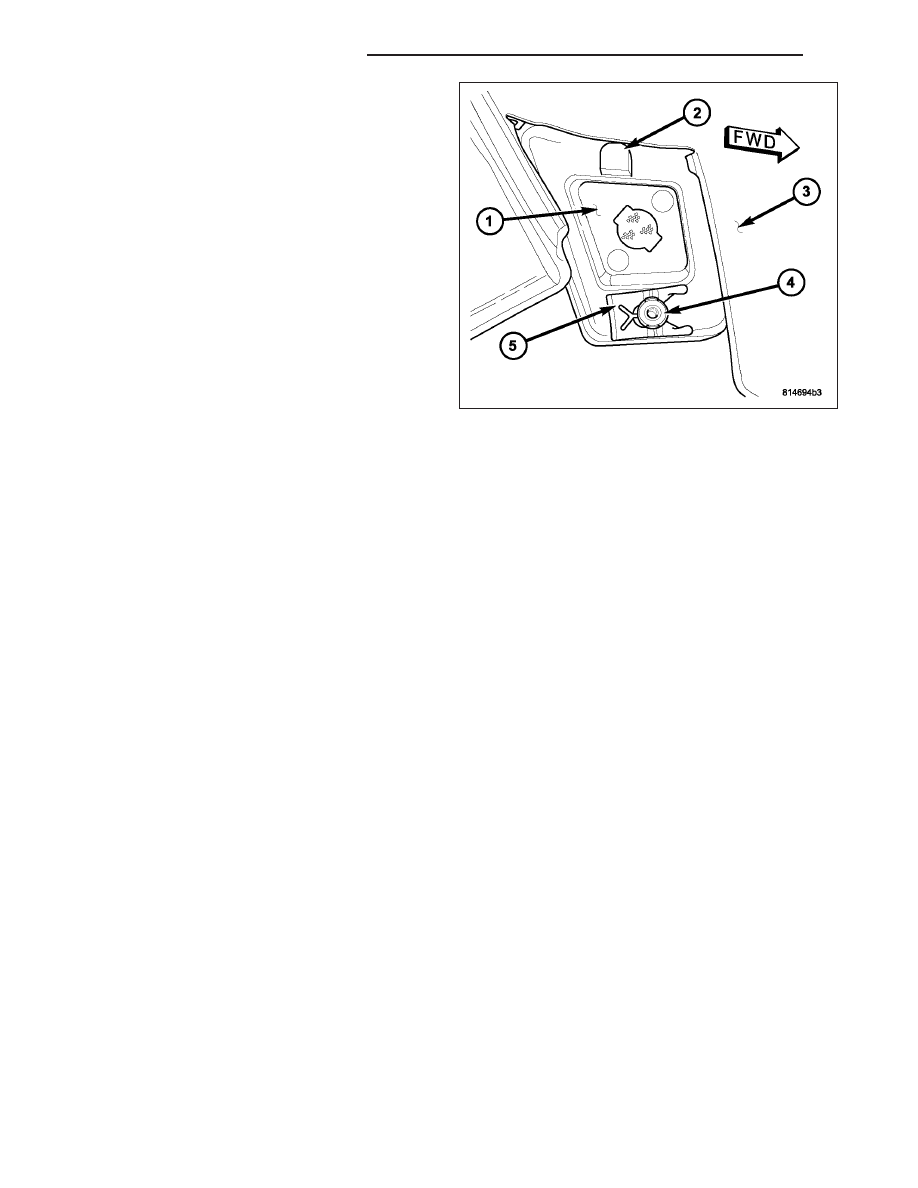Jeep Liberty KJ. Manual - part 110

1. Position the front side marker lamp unit (1) to the
lamp mounting hole on the outside of the fascia.
2. Engage the tab (2) at the top of the lamp into the
notch at the top of the mounting hole then push the
pin (4) on the lower end of the lamp through the
round hole at the base of the mounting hole.
3. Reach between the front of the adjacent right or
left front fender wheel liner and the lower bumper
fascia (3) to access the back of the lamp housing.
4. Slide the retaining clip (5) onto the pin on the lower
end of the lamp housing to secure the lamp to the
fascia.
5. If the vehicle is so equipped, align the socket and
bulb with the keyed opening on the back of the
housing.
6. If the vehicle is so equipped, insert the socket and
bulb into the housing until the socket is firmly
seated.
7. If the vehicle is so equipped, rotate the socket clockwise about 30 degrees to lock it into place.
8. Reinstall the four fasteners securing the front of the wheel liner to the lower edge of the fascia and the outboard
surface of the frame rail ahead of the front wheel.
9. Reconnect the battery negative cable.
8L - 98
LAMPS/LIGHTING - EXTERIOR
KJ